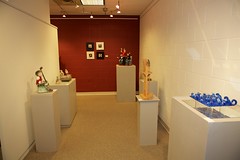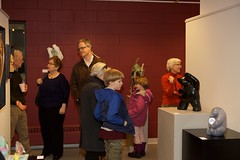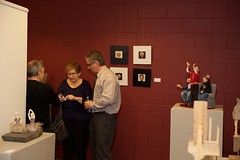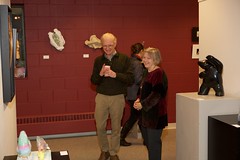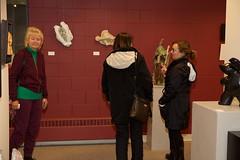by Sandra Marshall
Since his early years, Jim Lawrence has been enthralled by nature, camping in the wild and loving the forest and ocean near his hometown of Halifax. Rocks, plants and animals all drew him and he drew them in return.
He always enjoyed crafts -modelling clay, papier-maché, drawing and colouring, water colours, model airplanes, mecano sets, construction blocks. But he especially loved to carve wood. As a youngster, he always carried a small pen-knife and whittling branches occupied his hands and mind.
In grades 7 and 8, boys were required to take Industrial Arts. Classes were split between wood working and metal shop work, where he learned to use the basic tools and equipment for both, but was happiest working in wood.
As an adult, he began painting courses, working in oils and acrylics. Over the years he tried basic courses in clay/ceramics, soap stone/plaster carving and several wood carving courses. Again, he was happiest working in wood.
The evolution of his desire to do wood sculpture gelled only as he approached retirement about 18 years ago. That is when he began serious wood sculpture, to challenge himself and fulfill his basic desire to create.
Lawrence pursued engineering at Royal Roads Military College in Victoria and later Royal Military College in Kingston where he switched to chemistry after his third year. He completed his studies at Dalhousie University in Halifax where he earned a PhD in Environmental Analytical Chemistry. During his time at Dal, he returned to his love of art, joining evening courses at the Nova Scotia College of Art, and later in Ottawa where he moved to pursue his scientific career. His curiosity and creativity led to a fulfilling career as a research scientist and it is this same curiosity and creativity that drives his artistic side today.. As a scientist I would always explore better ways to accomplish a task.
Lawrence considers himself lucky to have lived a year in both Amsterdam and Paris. They were wonderful opportunities to soak up the art of the masters and he visited every art museum those cities. In Amsterdam he loved the Dutch Masters and the work of van Gogh. In Paris he was drawn to the Impressionists at the Musee d’Orsay. The work of Salvadore Dali also continues to inspire him.
Like most artists, Lawrence’s creative process is driven by inspiration. The source of inspiration may be in the works of other artists, photos in print and nature itself. His broad interests sometimes lead him to create in many genres from realism, figurative, surrealistic, abstract to expressionistic pieces.
He especially enjoys carving ‘found’ wood, like suggestive tree stumps, roots and partially decayed wood, where the spark comes directly from the wood itself. Even when he starts a piece with a certain idea in mind, he is quite content if he ends up in a different place. Through the process, he may envision a different endpoint and makes no hesitation to change direction. As he works, the wood changes form and texture as different wood grains appear. That is the fun of the creative process– you often never know where you might end up!
The process is very important to him. He needs to enjoy it. So, hand carving in his studio while listening to enjoyable music is perfect for him. Time has wings. He dislikes using power tools because of safety issues, noise and dust creation, but accepts that these types of tools are necessary from time to time.
Lawrence wants to surprise and challenge the viewer with his creations. It might be a hanging baseball hat, an egg balancing on a finger or an abstract piece depicting the relationship between man and nature. Much of his work reflects the issue of human relationship with nature. His pieces pose questions about that relationship rather than offering opinions or answers.
With his curiosity and research background, Lawrence constantly experiments. He plays with different types of wood. Sizes may range from a one foot tall wall hanging to an eleven foot outdoor sculpture. He plans to integrate new materials such as metal, glass, plastic into new pieces.
Wood carving like stone carving requires some basic skills. So for a beginner, one needs to develop these to enjoy an expanded wood sculpture process. Jim Lawrence suggests that taking courses is a big help. Tools must be of good quality and chisels, gouges and knives must be kept sharp. He teaches wood carving at the Ottawa School of Art and sees that the biggest impediment to enjoyment is the use of dull tools.
Of course, his biggest recommendation is to do what you love.





